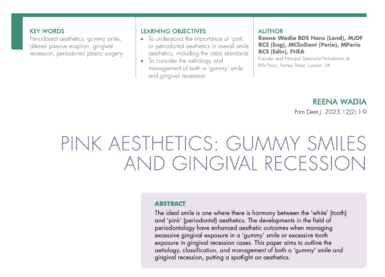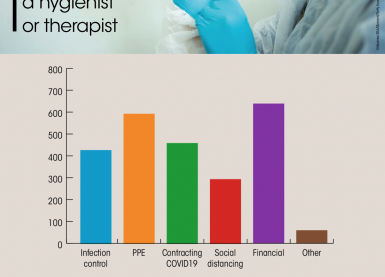Home/Articles
/ General Dental /
Imagining the Future of Medicine, The Royal Albert Hall #ImagineMed #TEDMED
April 21, 2014

THINKING OUTSIDE THE BOX
Francis Wells – Looking and seeing
- Risk averse culture changes how we can move forward or make advances.
- Ask the right questions: the golden circle of Simon Sinek – ‘why’ first.
- Looking and seeing – we are surrounded by visual data continuously but turning looking into perceiving is different. How you format what you see and what you make from an image is important. Look at it in a different way. Draw things out – it will force you to see things differently and change your understanding. Leonardo de Vinci – astonishingly accurate drawings.
- Form and function – Seminal work by D’Arcy Thompson (on growth and from). “Everything in nature is a diagram of the forces acting upon us”– forces may be genetic, gravitational, osmotic and/or emotional.
- The forces in nature can be mimicked by forces we want to manage in our lives e.g. architecture.
- Look then draw then see and you will have a vision.
- Ask the right question and believe the natural world and you will make advances.
Jamil El Imad – Building a brain stethoscope
- If a healthy brain is rhythmic then an unhealthy brain (neurological disorder) will behave in an un-rhythmic manner – concept of pattern matching. Similar to software used for anti-virus software – packets of data come into the computer, the antivirus scans for suspicious behaviour and then it looks for any patterns for known viruses.
- Idea to build brains’ stethoscope to help early prediction of conditions e.g. epilepsy. Electric signals converted to binary algorithm to help understand normal/pathology. Can be converted to a mobile device to monitor EEG signals in real-time – can send alert and then the sufferer can be given warning prior to seizure with obvious benefits such as avoiding physical injury. Can give the sufferer around 45 minutes notice.
- Computing has become a utility like electricity and water. We need to make the most of this resource. In a real-time economy we need real-time health care.
- Often challenges turn out to be opportunities!
Mark Wilson – Caring outside the box
- Timing of care and time to care.
- “If you’re not dead when we get there, you shouldn’t die” – but they do – we are not perfect yet at managing injuries.
- Brain injury isn’t like other injuries – it changes the person. This has a huge socioeconomic impact.
- When astronauts go into space, 70% suffer from motion sickness – NASA wanted to find a non-invasive way of measuring intracranial pressure.
- Hypoxia and cerebral blood flow – in a minute you would fill the entire brain in blood. Hypoxia increases cerebral blood flow. Venous drainage is very important. Retinal venous distension can be detected which relates to this. MRI scans – venous system distends on hypoxia. Seen in patients in intensive care – e.g. chest infection, tight cercal collars, and abdomen problems – these can cause the same thing.
- Loss of peripheral vision reported by NASA astronauts that spend longer in space.
- Under 45 years, trauma is the most common cause of death and within that brain injury is the most common!
- Go off the beaten track – extreme physiology has so much to give us.
- What makes good quality care – living longer, quality of life?
- Healthcare is becoming unaffordable but this is from companies who are not truly independent. Efficiency is important but we need to be careful who drives this effiency.
- Efficiency- certain number of things per time – if squeeze down, then care may get lost. We need time and space to provide care.
Sarah-Jayne Blakemore – Brainstrom
- Adolescent typical behaviour is there for a reason. Easy to mock this age group but we need to understand what is important to the adolescent at that time of their life.
- Risk taking and heightened self-consciousness – representative of an important period of brain development. Develop a profound sense of self during adolescence. When excluded socially, feel even worse than adults – hypersensitive to social exclusion. This might explain why some adolescents are more prone to taking risks especially when they are with their peer group. In fact, we all act differently and perform differently when with other people.
- Other people can also change the perceived risk. Health risks of smoking are apparent but there are also social pressures from friends (the latter may be a bigger risk). Social influence is heightened in adolescents, as they do not want to be rejected by their peer group.
- Brain imaging studies have explored what’s happening in the brain when we think about other people’s emotion or mental states – regions of the brain involved are called the social brain network – there is a different pattern of brain activity in adolescents.
- Can also analyse the structure of the brain – social brain undergoes structural development and therefore the brain may be sensitive to the social environment. This may have an impact on the way the brain is shaped and moulded.
- Formative period of life where the brain is undergoing important change – passion and creativity is high – we should try to be more understanding, listen more to adolescents and should celebrate rather than demonise this period of life.
MEDICINE WITHOUT BORDERS
Leo Cheng – Offshore medicine
- The enemy is poverty.
- Normal thyroid gland is 20g, in goitre thyroid gland can be 1 kg – massive strain. Voodoo doctors try to treat but cause harm instead.
- Cleft lip and palate – called devil’s baby in some remote villages – buried alive and death celebrated.
- Simple dental infections can become fresh and bone eating – noma. Any dental infection untreated can spread to the neck and choke the patient.
- Mercy ship helping to find a solution. This ship has 5 operating theatres and many more facilities. Africa Mercy is the biggest non-governmental hospital. Has been converted in Britain. 16.5 thousand tonne ship.
- Patient’s lives have been saved and their quality of life has been transformed.
- The healing process starts on screening. It starts with human contact and human acceptance.
- Don Stephens – founder of Mercy Ships with the aim of bringing hope and healing to the forgotten crew.
- Anyone can help and serve on the ship! Turn your emotion into compassion. Compassion is always followed by action. “I cannot do everything, but I can do something”.
Ali Parsa – Smart healthcare
- Day to day healthcare through a mobile phone.
- Babylon – making healthcare as simple as possible. Can ask questions, consult, monitor, check, shop and access records.
- For example, can make a virtual appointment and then the GP can be called at the arranged time. Thereafter, can rate the doctor and give feedback to improve care. Can then have the drug delivered to you. The records are stored on your phone and so you can access these at any time.
Jay Walker & Paul Freemont – The next revolution in health and medicine
- To understand or at least envision the future we need to go back to the past. Life began 3.6 billion years ago. Life steadily got more complicated – it started with a single cell organism and then evolution kicked in. Natural selection with random variation means endless changes combine randomly to tap energy from the sun (photosynthesis). Took 2 billion years before one cell life became multi-cell life. A further million years before animals and mammals. So the big question is, who is in control of this process? How does life get steadily more complicated?
- Because of our brains we have got more and more sophisticated than every other animal. 200 000 years ago – modern humans showed up – created more sophisticated tools and ways to communicate using language and imagination. Ability to conceptualise future, build tools etc. Man has taken control of the natural world, for better or for worse. Now a new way of understanding has developed – imagining answers and testing i.e. the scientific method, and this has unleashes a torrent of change. Man uses science to begin to understand what he couldn’t in the past. Man is now in control of shaping evolution.
- So what about the world inside of us? This is still a mystery. For example, heart disease is the number one killer; for 25% who die from heart disease, the first symptom is death and we don’t know much about it. The smallest tumour we can detect using the most up-to-date technology is 100 million cells. The earliest we can detect cancer is 6 years after it initiates! It’s only been 5-6 years since we sequenced the genome of bacteria. Before then no idea of microbiome even though we are made up of 90% bacteria! We are just beginning to understand gene expression.
- Health and medicine is currently like looking at just one snippet from a much larger picture. We are changing our understanding and developing. Future is health and medicine; we are about to figure out what is going on inside of us, animals and plants. We are going to change everything we know about our world and ourselves. Then we will take control of it. We have taken control of information layer of life – can create DNA and genes, express proteins and we can insert new genes – we can change the genetic code of animals and life. Synthetic biology sounds frightening and we are competing with natural selection. We have no idea how civilisation will change when we can start to understand codes of the software of life.
- Software writing capacity to improve the world – change stress of the current challenge – prevent and participate in improvement – change the way we live and way our children live.
- Engineering biology – pick components and make things. Construct new genetic circuits to give you the function that you want. Safety is thought about from the start.
- Synthetic biology –application also to bioenergy and biomanufacturing.
- Speed of this will be very fast. Faster than evolution. Natural selection has a predator! What will civilisation 2.0 look like?
TRANSLATING THE UNTRANSLATABLE
Alison Balsom – Music as a healer
- Music is medicine and music heals.
- Has music unlocked a memory for you? Common language between people? Only friend?
- Music can engage, empower and repair. Music has a vital place in medicine and science.
- Brass for Africa is allowing people to flourish rather than just survive.
Tali Sharot – The surprising science of future thinking
- We regularly shape our behaviour and others by inducing fear. We feel that inducing fear will lead to action.
- Science shows warnings only have a limited impact on behaviour e.g. changing smoking packages may not actually help quit smoking.
- Are there better ways to induce positive change?
- We are resistant to warnings. When something scares us we try to protect ourselves. Denial and rationalisation. Without knowing it, our psychological system kicks in and says that the threat is not relevant to us. This process can make you feel more resistant than you were before.
- Stock market – people log into their account just to check rather than make a transaction. Market high, people log in lots. When market low, avoid logging in as bad news makes us feel bad.
- We tell ourselves not to worry about things that might not happen. Until the point when it’s too late to jump into action and do anything about it.
- Studies have shown that people change their beliefs to the doctor that gives you a rosier view. We seem to have an inability to learn from information that we don’t want to hear. Ability to learn from bad news has reduced. Learning from good news has remained stable.
- The most vulnerable population (kids, teenagers, elderly) least likely to learn from warnings.
- USA – Camera (that staff were aware of) was installed to see how often medical staff wash hands before and after patients. Only 1 in 10 washed. Intervention introduced whereby electronic boards were used to monitor hand washing and this caused compliance to increase to 90%.
- Intervention works well because instead of using warnings of the future, it uses 3 principals that drive action to progress: immediate rewards, social incentive and progress.
- Action becomes associated with rewards and this then helps it become a habit.
- Emphasise to people how they can get better rather than not getting worse. Emphasise progress, not decline.
Katherine Sleeman – How to have a good death
- People find it hard to talk about dying.
- Death is not less inevitable but average human lifespan has doubled over the past 150 years because the things that used to kill us (childbirth, infection etc) are now treatable.
- We have swapped dying at a younger age to a slower death in older age.
- How will we die? One fifth will die suddenly, unexpectedly and live well till that moment. Another fifth from cancer (similar good function till quite close to death). Majority of us will live with and die from chronic medical problems giving slow progression of deterioration of function.
- What does a good death mean? It may mean different things to different people. Symptom free, comfortable in chosen place and free from intrusions of medical intervention? But even these simple preferences may not be met.
- Fortune spent on sophisticated hospital care may paradoxically be worsening and not improving our quality of life/death.
- Palliative care – goal of care to improve quality of care rather than quantity. Find out patients’ worst problems and try to improve them. No age restriction to palliative care.
- Is there a trade-off between quality and quantity? May not be true. Studies have shown that cancer patients with palliative care lived longer.
- Patients and doctors are not embracing palliative care. Waiting for societal views and expectations to change.
- People find it hard to talk about dying. Yet society needs death as much as new life. The end of life should be as important as it’s beginning. We plan so well for a new baby but not death? Stop whispering and start talking.
Ben Goldacre – Bad science
- Results from clinical trials being held away from us routinely and legally. We may be inflicting harm to our patients as a result of this?
- Trials have to be registered before publishing to help with this. But no audit to see compliance, when it was done a quarter and a half still unregistered.
- Not all trials are fair tests of an experiment. Some double blind studies – pills are of different colours. Pneumonia study by patient self report! Access to full methods and results matters.
- Progress?
- Feel despondent in medicine – fall back on rules – quality improvement framework, audit, teamwork. Right thing to do here. What done before, did it work, who stopped you, how measure if done any better.
- Federation and health committee have b
- AllTrials camapgin – registered with full method and results reported. Patient groups. Supported by all professional and medical bodies that matter.
- Trials with positive results are twice as likely to be published than trials with negative results.
- We need information on the methods and results of trials done 2, 5, 10 and 20 years ago, to provide a more complete evidence base.
- Each RCT costs millions of dollars. But we need this as we want to exclude bias. It also gives us an accurate picture of the true risks and benefits of treatment. If half of the trials are withheld, we are losing value.
- When people suggest its radical as a notion that we should share results of all trials it is obvious not radical – benefits industries as they do not benefit from poor reputation when uncovered and the impact of not sharing results on patient care is unacceptable,
- www.alltrials.net – join and show leadership where others are failing.




